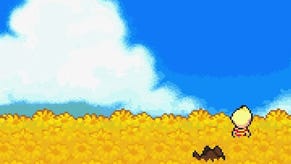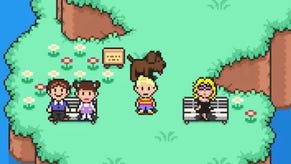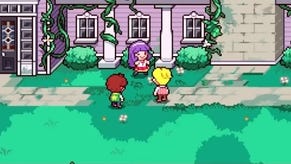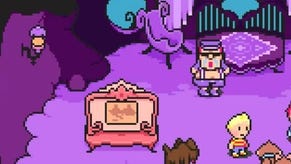Mother 3
Found in translation.
Split into eight chapters, the game adopts a similar approach to recent DS favourite, Dragon Quest IV. Most of the chapters are viewed from a different character's perspective, your role shifting from that of cowboy father to inept thief, to family dog, to abused monkey. The game begins, in contrast to the previous Mother titles, in pastoral forest village, soon threatened by a forest fire that acts as the first dramatic trigger. Overlaid onto this is a larger, darker menace: the pig mask army. Throughout the game they invade your town, transforming it from rustic haven to technologically advanced police state. It's an unsubtle transformation, but one that allows the writers to explore the relationship between nature and technology, feudalism and capitalism, individuals and community, albeit a little heavy-handedly.
The systems that the story clothes are less effective. This is, by any standards, an RPG-lite with a single Swiss Army knife button used for investigating areas and instigating conversations, and another for running about and charging into objects. These two inputs make up your entire arsenal (although some characters do have their own, context-sensitive actions) when out on the field, so the only systemic innovation is in the game's battle system.

Here the basic mechanics mirror Dragon Quest, albeit with a rhythm-action mechanic bolted on. When attacking enemies in the standard way, if you continue to tap the button in time with the battle music you can execute additional free attacks, one per tap, up to a maximum of sixteen in a chain. Occasionally it's not always clear which part of the soundtrack you're meant to be beat-matching but put an enemy to sleep and the game will isolate the correct pulse with a heartbeat sound effect. Later on, the rhythm of the music during battles speeds up and slows down, and some enemies will try to mess with its timing to wrong-thumb you.
Nevertheless, there's no disguising that this is a game with few headline-friendly unique selling points. Instead there's wonder in its detail: the Batman theme tune that plays out every time you fight a bat; the character who chastises you for not giggling at puns; the time you take a restorative bath after rescuing a villager from a burning house and emerge to find your clothes have been washed clean but your face it still sooty; the ubiquitous frogs who save your game for you and their increasingly ridiculous get-up; the way the flying mice bouff up their hair to make themselves more imposing before battles; the time you fight a reconstructed mecha caribou; the ants and sparrows who detail the game's finer points and explain where you're going wrong; the terrible haiku; the time you open a treasure chest only for a ghost to pop out and belch in your face; the palate-cleansing mint you receive in the next room to help you forget what happened; the campfire scene. Mother 3's packed with memorable moments.
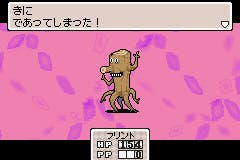
Sometimes simplicity in a videogame is analogous to raw stupidity. But well-executed simplicity, the kind of willful unfussiness it takes a competent designer to pull off, is elegance. Mother 3 is elegant in its simplicity. It nestles a compelling story of surprising depth inside a game of focused breadth. Devoid of random battles and with no need to grind to get through the story, this is a journey palatable even to genre detractors. Mother 3's birth might have been protracted and wholly unorthodox it was well worth the pain and sacrifice.
Instructions on how to play Mother 3 in English can be found at the fan translators' official website.

